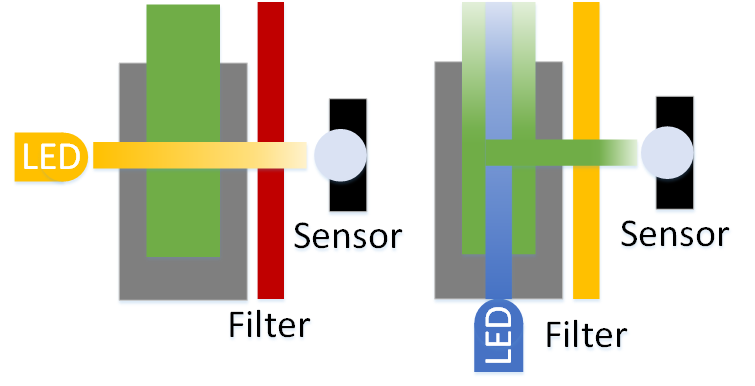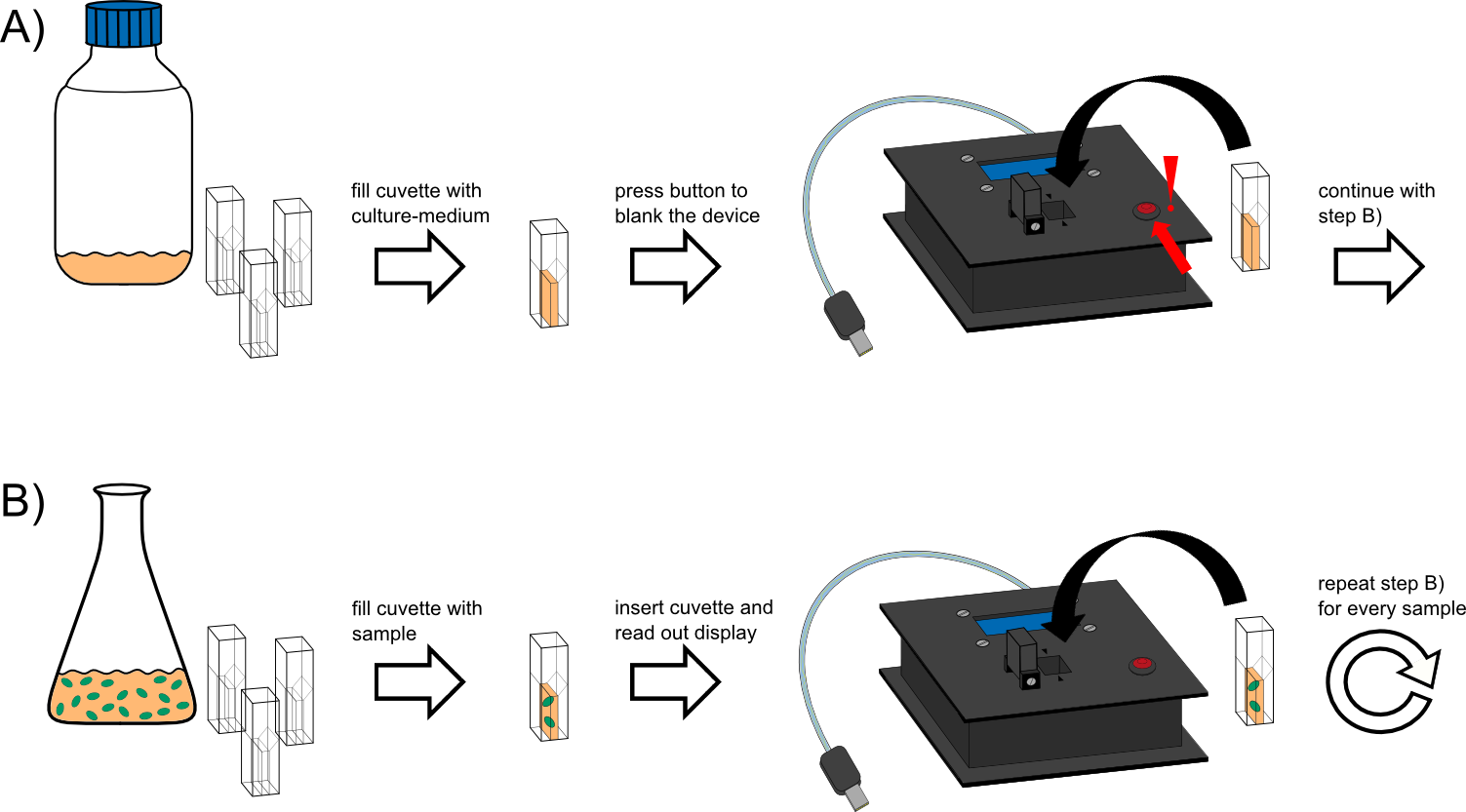OD/F device
Measuring Optical Density (OD) is a central element in microbiological work and synthetic biology. One question that has to be answered often is how many cells are in a suspension. Here, the OD can give you a hint. Unfortunately, commercially available OD meters cost several hundred dollars ([http://www.laboratory-equipment.com/laboratory-equipment/cell-density-meter.php OD meter]), and can limit the spread of synthetic biology.
Therefore, we wanted to devenlop an alternative for measuring OD, specifically designed for Biohackspaces, DIY and community laboratories and schools. With our OD/F device, we want to enable many people to do good, precise and inexpensive science research.
Especially for the Interlab Study fluorescence, too, has been of importance. One aim of this study was to measure the correlation between OD and fluorescence. Since the taks of measuring OD and fluorescence are often performed at the same time, we want to present a device that can measure both fluorescence and OD with just some easy adjustments. This way, we can measure how much fluorescence there is per amount of cells.
In fact, you can find some DIY posts for turbidity meters such as [http://www.thingiverse.com/thing:74415 turbidity sensors]. However, a proper assessment of their linearity as well as a calculated OD-value are missing.
Regarding fluorescence, we are of course not re-inventing the wheel (well, not totally). The 2010 iGEM Cambridge team actually built a very similar device, the E.glometer. However, there's no data available showing an actual comparison of the data from their device and some proven commercial system to, for example, assess linearity of the measurement.
|
 "
"


